Ever feel like you look in the mirror and a stranger is staring back at you? That is what happens every day to many breast cancer patients who face hair loss during breast cancer treatment. Hair is not something we have; it’s connected to who we are, how we feel about ourselves, and our womanhood. Losing it can be a loss of part of who we are.
But here’s the good part: you are not alone, and there are ways to deal with this hard effect. Whether you’re just starting your breast cancer journey or helping someone you care about, knowing how hair loss happens and finding good ways to cope can make all the difference. For example, understanding the factors that contribute to breast cancer itself can offer insight into why treatments affect the body in certain ways. Discover the hidden factors behind how breast cancer starts and empower yourself with knowledge.
We’re going to look at the emotional rollercoaster of hair loss in this blog post during breast cancer treatment-preparing for the inevitable and dealing with day-to-day challenges. We’ll discuss practical tips for caring for your scalp, how to select the right head coverings, and nurturing emotional well-being. And we’ll look forward to the exciting phase of hair regrowth after treatment. Let’s begin this journey together, learning to accept our hair loss with grace, strength, and a bit of style.
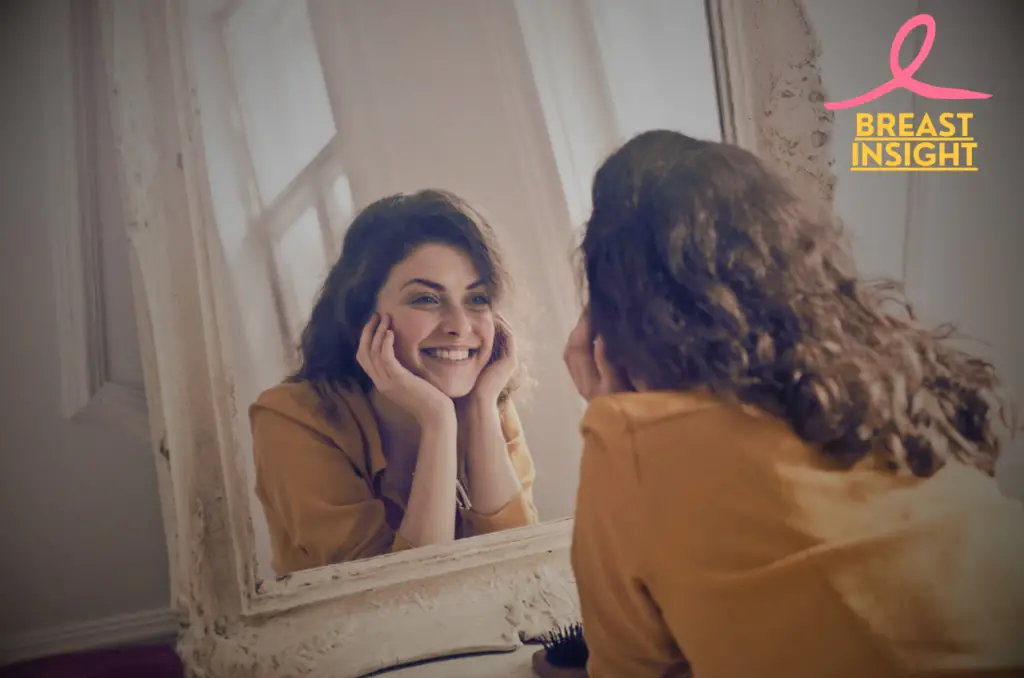
Understanding Hair Loss during Breast Cancer Treatment
Common causes of hair loss in cancer patients
Hair loss occurs in most cases of cancer treatment through chemotherapy and radiation therapy. These therapies target the fast-dividing cells in the body, which include cancerous cells and hair follicles. The following are the main reasons:
| Treatment | Mechanism of Hair Loss |
| Chemotherapy | Damages hair follicles, leading to widespread hair loss |
| Radiation | Causes localized hair loss in the treated area |
| Targeted therapies | May cause thinning or brittleness of hair |
Timeline of hair loss in the treatment
- 2-3 weeks after chemotherapy initiation: Hair loss may start
- 1-2 months into treatment: Greatest hair loss happens
- Treatment phase: Progressive hair loss or fall
- 3-6 months post-treatment: Hair typically begins to re-grow
The emotional effects of hair loss
Hair loss is really affecting the psychosomatic conditioning of breast cancer patients. They often feel as though:
- Loss of identity and femininity
- Lower self-esteem and confidence
- Anxiety about others’ perceptions
- Loss of personal appearance
Many patients say that loss of hair is one of the hardest aspects of cancer treatment. Acknowledge these emotions and reach out to loved ones, friends, a support group, or a mental health professional. Remember, while hair loss is often temporary, its emotional impact is valid and deserves attention. To better understand the less visible struggles of breast cancer, explore the 6 hidden effects of breast cancer you should know.
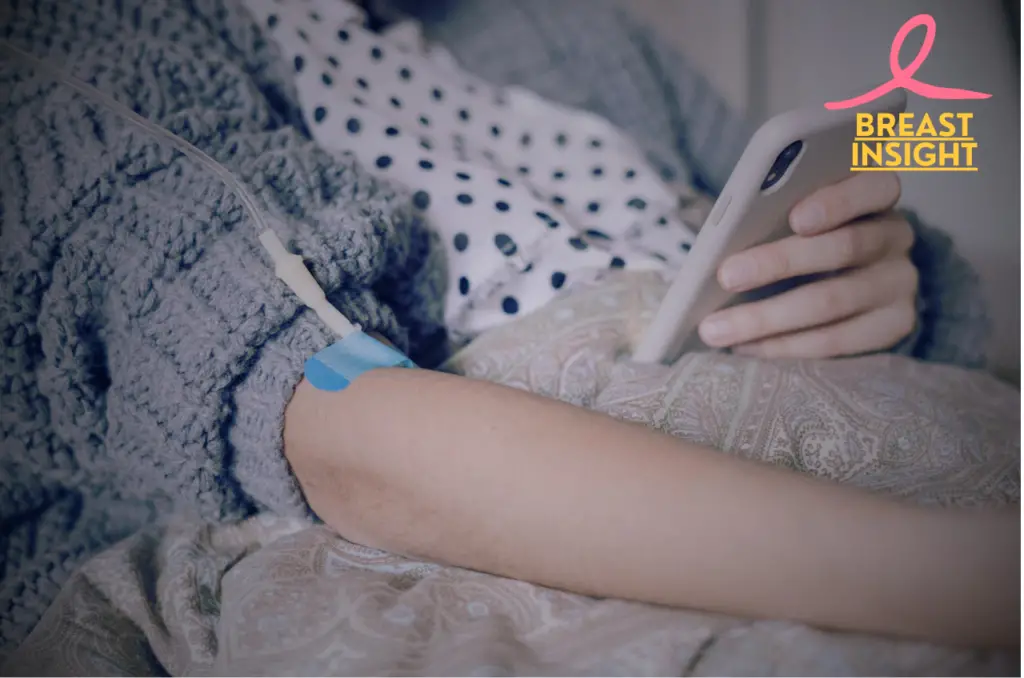
Preparing for Hair Loss
Knowing the cause of hair loss during breast cancer treatment, let’s see how to prepare for such a change. Being proactive would give you the feeling of control and thus reduce anxiety.
A. Discuss hair loss with your healthcare team
Your doctor and nurses are good sources of information about hair loss. They can offer you:
- A schedule for when hair loss may occur
- Possible amount of hair loss
- Choices for keeping hair safe
So, feel free to ask any questions and share your worries. Your team is there to help you through this process.
B. Cutting or shaving your hair at your discretion
Many patients feel confident when they can handle their hair loss. Imagine this:
| Option | Pros | Cons |
| Gradual trimming | Less dramatic change | Prolonged process |
| Shaving | Quick, clean look | Immediate change |
| Letting it fall naturally | No action required | Can be emotionally challenging |
C. Exploring hair preservation techniques
Some methods might help lessen hair loss, but there’s no guarantee:
- Scalp cooling caps
- Minoxidil (with doctor’s prescription)
- Gentle hair care practices
D. Picking head coverings in advance
This head preparation will give confidence. These include:
- Wigs (synthetic or human hair)
- Scarves and turbans
- Hats and beanies
- Headbands with attached hair
Try different styles, find what feels comfortable, and suits your personality. Many centers offering oncology have a wig-fitting service or can recommend local resources.
With these precautions in place, you’ll come at this the treatment of your breast cancer with a better understanding of the physiological and emotional elements of hair loss. To further support your emotional well-being during this challenging journey, explore these 5 tips to maintain mental health during breast cancer. Finally, we’ll outline some strategies to cope with hair loss while on treatment.
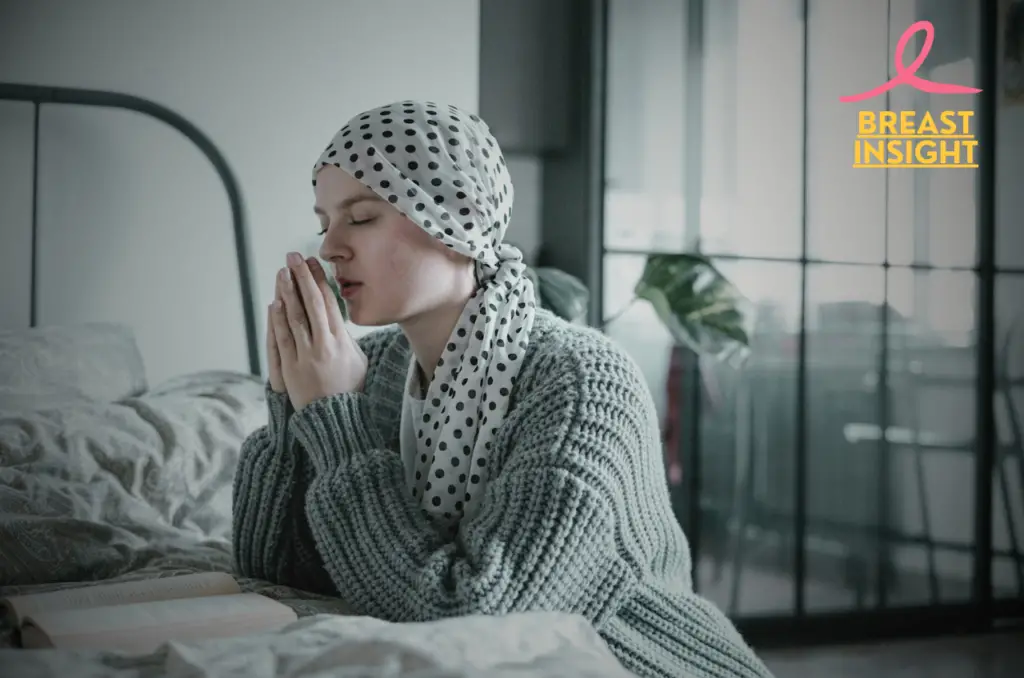
Managing hair loss during treatment
Care of the scalp
When experiencing hair loss from breast cancer treatment, scalp care is considered essential. Always keep your scalp clean and moisturized to avoid dryness and irritation. Clean with gentle, fragrance-free products and lukewarm water. If going outside, use a mild sunscreen or wear protective headwear to protect your sensitive scalp from the damaging sun.
Choosing comfortable head coverings
Choosing the right head coverings may make you feel more comfortable and confident. Here are some options:
- Soft cotton scarves
- Light turbans
- Bamboo sleep caps
- Breathable beanies
| Material | Benefits |
| Cotton | Breathable, soft, affordable |
| Bamboo | Moisture-wicking, hypoallergenic |
| Silk | Smooth, reduces friction |
Exploring wig options
Wigs may make things feel nearly normal during the treatment. Consider these when choosing a wig:
- Human hair versus synthetic
- Super-cap assembly
- Color and style
- Comfort and fit
Go to a specialized wig store or discuss with a hair loss expert to find the best choice for you.
Accepting your new look
This is a challenging period. It can be an opportunity for self-expression and creativity. Try out many head coverings, accessorize with accessories, try different makeup techniques, which can help enhance your features better. Your beauty goes well beyond your hair, and embracing this look can be very empowering.
Now that we’ve talked about handling hair loss during treatment, it’s equally important to explore how breast cancer affects other aspects of life.
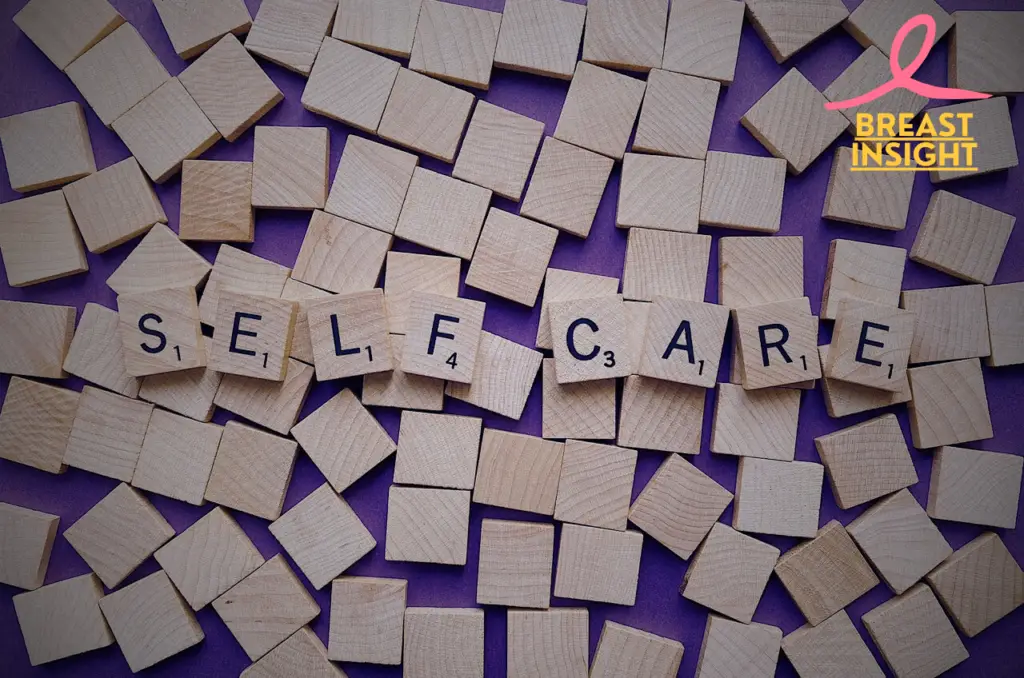
Coping strategies for emotional well-being
Now that we’ve covered managing hair loss during treatment, let’s talk about how to help with your feelings. Hair loss is tough while you’re on treatment for breast cancer, but there are things you can do to deal with it and stay positive.
Joining support groups
Talking to people who have similar experiences can be very helpful. Support groups offer:
- Emotional support and understanding
- Practical tips for coping with hair loss
- A sense of community and belonging
| Type of Support Group | Benefits |
| In-person meetings | Face-to-face interactions, immediate support |
| Online forums | 24/7 accessibility, diverse perspectives |
| Social media groups | Easy to join, wide-reaching community |
Practicing self-care and self-compassion
Taking good care of yourself during this difficult period: Consider:
- Practicing relaxation techniques such as meditation or yoga
- Doing things you like to have fun
- Acknowledging your feelings without judgment
Communicating with loved ones about your feelings
Open and candid communication with family and friends can offer further support. Try:
- Talking about your worries and feelings openly
- Asking for specific help only when needed
- Giving them information about hair loss related to cancer
It is normal to feel upset about losing your hair. These coping strategies will help you cope with the emotional effects of this side effect and maintain your general health during treatment for breast cancer. Additionally, if you’re feeling overwhelmed by procedures like biopsies, these 6 tips to stay calm during a breast biopsy can help ease your worries.
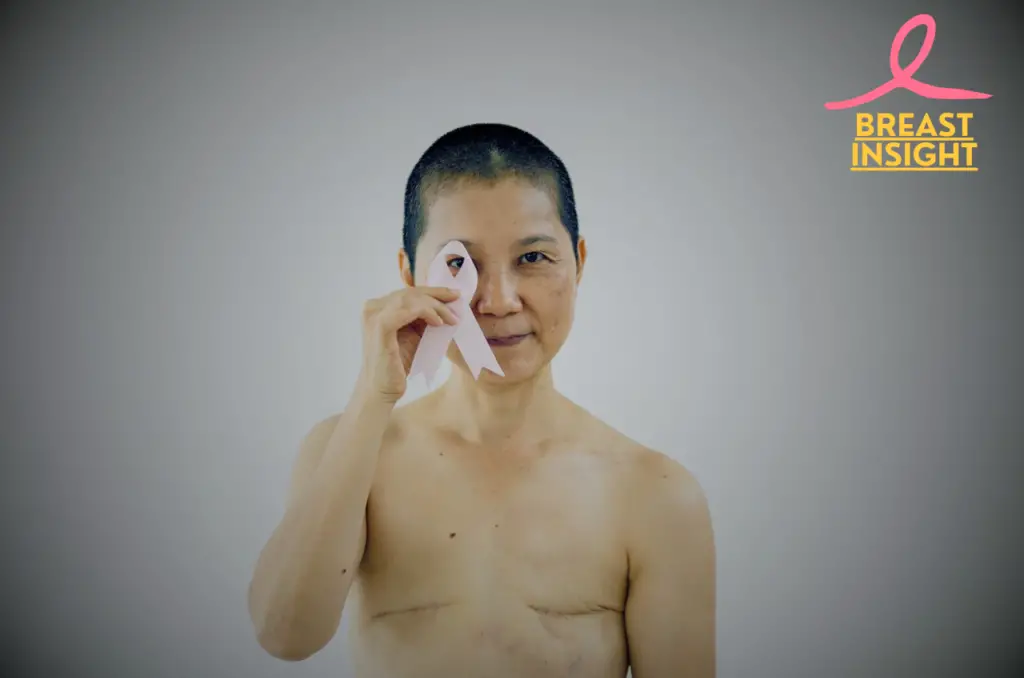
Hair Growth after Treatment
Now that you have completed your breast cancer treatment, it’s time to think about the most exciting journey of growing back your hair. This time is exciting and difficult as well, but knowing what’s coming makes things much easier.
Timeline of Hair Regrowth
Hair growth typically follows the following approximate calendar:
- 2-3 weeks after treatment: Fine, fuzzy hair may begin to appear
- 1-2 months: Thicker hair starts to appear
- 3-6 months: Hair is more visible and sometimes covers the whole scalp
- 6-12 months: Hair growth continues to increase in length and volume
| Time After Treatment | Hair Growth Stage |
| 2-3 weeks | Fine, fuzzy hair |
| 1-2 months | Thicker hair growth |
| 3-6 months | Noticeable coverage |
| 6-12 months | Increased length and volume |
Taking care of new hair growth
As your hair grows back, it should be treated with care:
- Use gentle, sulfate-free shampoos
- Avoid heat styling tools at first
- Moisturize your scalp regularly
- Brush gently and be patient
Discussing changes in texture or color of hair
It’s normal for new hair to feel or look different. Some patients notice:
- Curlier or straighter hair
- Gray or whitening of hair
- Temporary spurs or asymmetrical growth
In most cases, these changes are temporary, and your hair can revert back to its previous state with time.
Celebrate significant events in your hair regrowth journey
Say goodbye to each stage as part of healing:
- First visible fluff
- First haircut
- Giving up wigs or head coverings
- Styling your new hair
Every person’s journey is different. Enjoy your progress and be patient with how things go. Recovery is about more than hair regrowth—understanding other aspects of healing, like diagnostic tools and their benefits can also be empowering. Learn more about the insights and limitations of breast MRI as part of your ongoing breast cancer recovery journey.
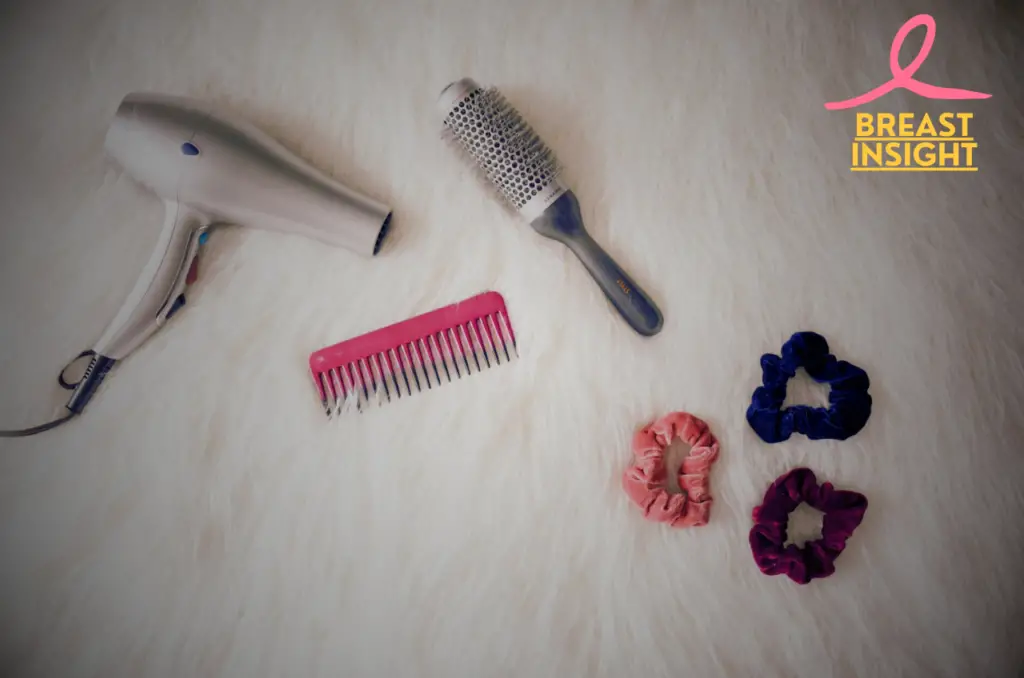
Conclusion
It is indeed challenging, but there are ways that make losing hair due to the treatment of breast cancer quite manageable and easy to survive with a positive attitude. If patients know why the hair loss occurs and can prepare themselves both emotionally and practically, they can try different ways to deal with it. Using coping strategies will keep self-esteem and emotional health intact while on these treatments.
Hair loss is temporary and, in most cases, hair grows back after a few months from the cessation of treatment. By taking care of your health and using the support around you, you can face this time with strength and hope. Use this opportunity to change how you view your beauty and strength, knowing that others share your experience.
Frequently Asked Questions (FAQs)
Why does breast cancer treatment cause hair loss?
1. Hair loss happens mainly because chemotherapy affects cells that grow rapidly, such as those in hair follicles.
2. Radiation therapy directed at the scalp may cause hair loss in that area.
3. Hormonal treatments can sometimes even make the hair become less thick.
Will my hair grow back after treatment?
1. Hair grows back after three weeks on average, if chemotherapy is completed.
2. It may at first grow again, but it comes back differently in texture or color, but usually returns to normal later.
3. Patience and good scalp care can help in healthy regrowing.
How can I prepare for hair loss during treatment?
1. Consider getting a short haircut to reduce the emotional impacts of losing hair.
2. Discuss wig options or head coverings such as scarves and hats before treatment begins.
3. Discuss this option with your oncologist. Scalp cooling caps may potentially decrease the number of chemotherapy-induced hair losses.
Are there ways to protect my scalp during hair loss?
1. Mild, fragrance-free shampoos and avoidance of harsh chemicals or heat styling.
2. Moisturize your scalp regularly to prevent dryness.
3. Keep your scalp protected from the sun by wearing hats, applying sun screans, etc.
What are some stylish alternatives to wigs?
1. Scarves, turbans, and bandanas can be trendy and comfortable.
2. Soft-lining hats must be considered, Good for people with a sensitive scalp.
3. Embrace natural bald look, it can be very empowering!

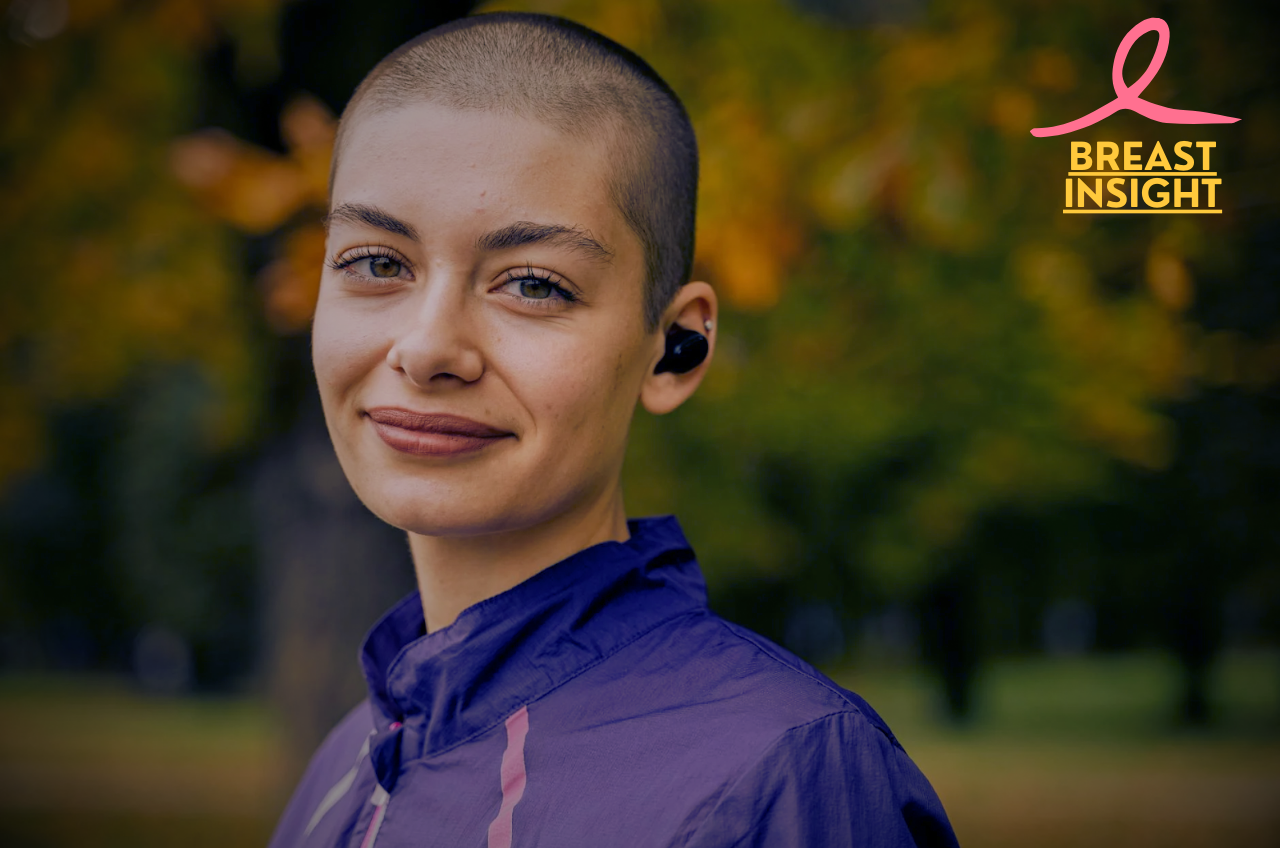
1 thought on “5 Proven Techniques to Prepare for Hair Loss During Breast Cancer Treatment”